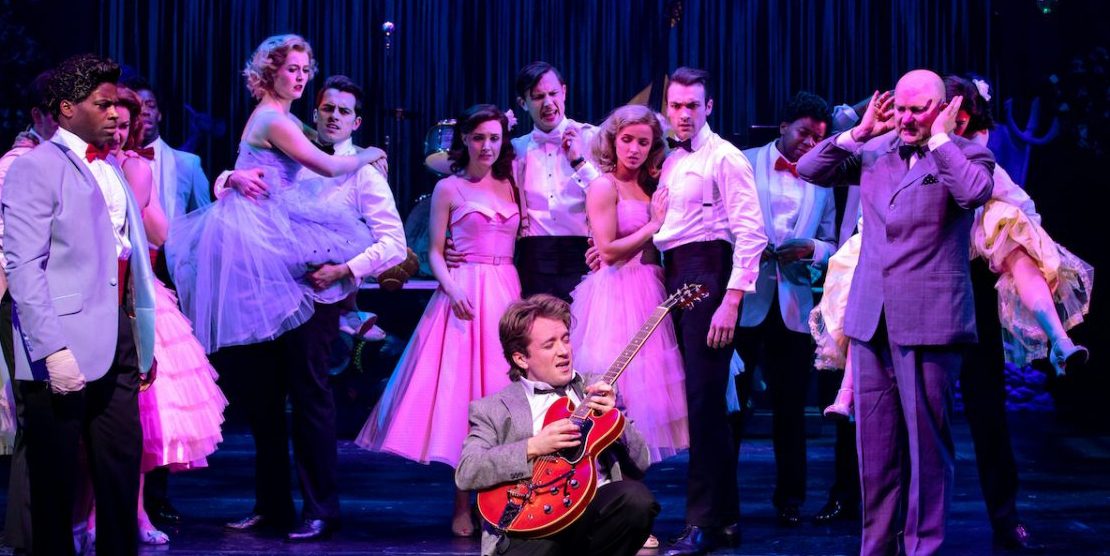Show business is, as the saying goes, not art, but business. And business can be a very venal beast.
Rarely has that been more blindingly obvious than in the completely unneeded film-to-stage musicalisation of the much-loved 1985 time-travel film, Back to the Future.
With book by one of the original co-writers, Bob Gale, and music by Alan Silvestri and Glenn Ballard, the creative team have a combined age of 209, with which ought to have come a wealth of experience.
Well, if they have it, they’re keeping it way on the low down…
What I thought of Back to the Future, The Musical, is inconsequential in the global scale of things; it’s a commercial juggernaut kept afloat – or should that be aloft – by the huge sums thrown at it to bring it to the stage, and will be around for a few years yet, trading on peoples’ nostalgia, and undying love for the film.
Like the screen to stage adaptations The Bodyguard and Ghost before them – the latter for which we must also blame Ballard – the producers of BTTF clearly didn’t ever aim to create a piece of musical theatre, but to put the film on stage.
And that, I would suggest, it exactly what they’ve done. And although I don’t think the musical would work if you hadn’t seen the film, the fact that everybody in the theatre HAS seen the film means that the show works because they know the film works, so they let the flaws pass.
But couldn’t they have aimed just a little higher?
The musical numbers, such as they are, are so forgettable I’m surprised even the cast can remember them. This is a show where you’ll leave the theatre humming the set. Or, more accurately ‘the car’ (that famous Delorian) and the production, which is the best that throwing an awful lot of money at the problem can bu
So let us celebrate all that is good about the show…
The cast are great. Roger Bart as Doc Brown is suitably starry, and Olly Dobson as Marty McFly makes a very acceptable Michael J Fox stand-in.
Top marks, however, go to the designers and those who realised the designs. As I don’t know exactly who did what (and as presumably it was a collaborative effort anyway), I’m just going to name them all and the way they’re listed in the programme.
Lighting Designer – Tim Lutkin. Video Designer – Finn Ross. Illusion designer – Chris Fisher. Lighting Designer – Hugh Vanstone. Designer Tim Hatley. And Sound Designer – Gareth Owen.
There will be Olivier’s and other awards aplenty for this group of talented professionals, and they’ll deserve them.
I’m not going to give away what happens to the car, so let’s just say it’s pretty true to the film in the best way possible. As is the whole final section of the action of the show where Doc has to go up onto the Town Hall Clock to re-splice the power cable that’s become unplugged, in the storm that will eventually re-power the Delorian.
Seeing the location of the clock on the actual set from the start of the show I was wondering how they were going to do it, and I have to admit the solution far exceeded my expectations.
At key parts of the show gauzes are used and though projecting onto them is an idea as old as the hills, here they’re taken to a new level, ramping up the excitement that the musical itself fails to excite.
All in all,…go for the effects and the staging, which are breathtaking, not the musical numbers

